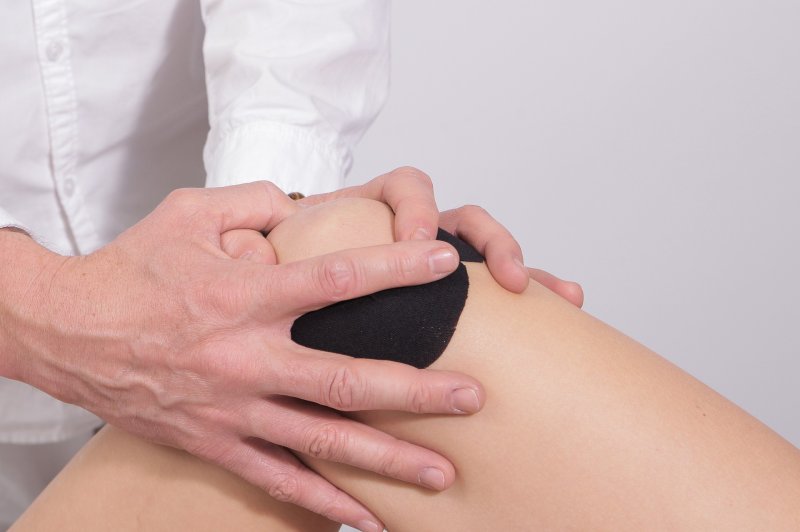A study found people who get prompt physical therapy for pain in the knee, shoulder or lower back may have less need for opioids. Photo by
whitesession/pixabay
SUNDAY, Dec. 16, 2018 (HealthDay News) -- People who get prompt physical therapy for pain in the knee, shoulder or lower back may have less need for opioid painkillers, new research suggests.
The study, of nearly 89,000 U.S. patients, found that people given physical therapy for their pain were 7 percent to 16 percent less likely to fill a prescription for an opioid.
The researchers said the findings suggest that early physical therapy is one way to reduce Americans' use of the risky, potentially addictive painkillers.
"For people dealing with these types of musculoskeletal pain, it may really be worth considering physical therapy -- and suggesting that your healthcare provider give you a referral," said lead researcher Dr. Eric Sun, an assistant professor of anesthesiology, perioperative and pain medicine at Stanford University.
Dr. Houman Danesh, a pain management specialist who was not involved in the study, agreed.
"This study shows how important physical therapy can be," said Danesh, who directs the division of integrative pain management at Mount Sinai Hospital, in New York City.
Physical therapy does require a much bigger investment than taking pain medication -- and, he said, patients may have to travel to find a therapist who is the best fit for them.
"Physical therapy is highly variable," Danesh said. "Not all physical therapists are equal -- just like not all doctors are."
But the effort can be worth it, according to Danesh, because unlike painkillers, physical therapy can help people get at the root of their pain -- such as imbalances in muscle strength.
"You can take an opioid for a month, but if you don't get at the underlying issue [for the pain], you'll go back to where you started," he explained.
The findings, published online Dec. 14 in JAMA Network Open, come amid a growing national opioid epidemic. While many people who abuse opioids are hooked on illegal versions -- like heroin and illicitly manufactured fentanyl -- prescription opioid abuse remains a major concern.
Medical guidelines, from groups like the American College of Physicians, now urge doctors to first offer non-drug options for muscle and joint pain. Opioids, such as Vicodin and OxyContin, should be reserved as a last resort.
The new findings support those guidelines, according to Sun's team.
The results are based on insurance records from nearly 89,000 Americans who were diagnosed with pain affecting the lower back, knee, shoulder or neck.
All of the patients had a second doctor visit within a month of the diagnosis, and an opioid prescription within 90 days. So the group included only people with significant pain, the researchers said.
Overall, 29 percent of the patients started physical therapy within 90 days of being diagnosed. Compared with those who did not have physical therapy, the therapy patients were 7 percent to 16 percent less likely to fill an opioid prescription -- depending on the type of pain they had.
And when physical therapy patients did use opioids, they tended to use a little less -- about 10 percent less, on average, the researchers found.
The findings do not prove that physical therapy directly prevented some opioid use.
Sun explained that, "since physical therapy is more work than simply taking an opioid, patients who are willing to try physical therapy may be patients who are more motivated in general to reduce opioid use."
But his team did account for some other factors -- such as a patient's age and any chronic medical conditions. And physical therapy was still linked to less opioid use.
While this study focused on physical therapy, Danesh said, there are other opioid alternatives with evidence to support them.
Depending on the cause of the pain, he said, people may find relief from acupuncture; exercises to strengthen particular muscle groups; injections of anti-inflammatory steroids or other medications; platelet-rich plasma -- where a patient's own platelets [a type of blood cell] are injected into an injured tendon or cartilage; and nerve ablation, where precisely controlled heat is used to temporarily disable nerves causing the pain.
It's also possible that some simple lifestyle adjustments will help, Danesh pointed out. An old worn-out mattress could be part of your back pain woes, for instance. Ill-fitting, non-supportive or worn shoes could be feeding your knee pain.
What's important, Danesh said, is to get at the underlying issues.
"We have to match patients with the right treatment for them," he said.
More information
The U.S. National Center for Complementary and Integrative Health has more on managing pain.
Copyright © 2018 HealthDay. All rights reserved.
![]()
















